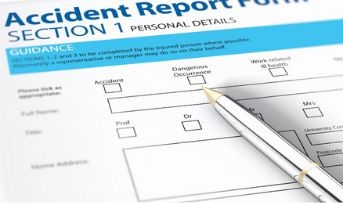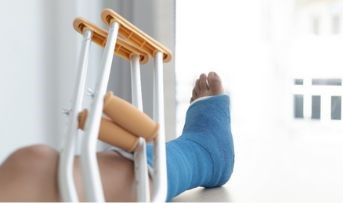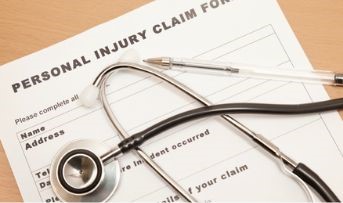General Insurance Blogs, Articles & Updates by - Magma HDI
Have us call you
- RENEW YOUR POLICY
- BUY NEW POLICY

Should you purchase multiple personal accident policies
A personal accident policy covers the loss or damage to the policyholder due to accidents. Considering that unforeseen accidents may happen at any time, one must always be prudent and purchase the best personal accident policy in India for complete coverage. However, does purchasing multiple personal accident policies result in payouts from various insurers? Read on if you need clarification about whether you can claim insurance from multiple insurers for a single accident.
Types of personal accident policy.
An insurance company provides several personal accident plans with differing inclusions, conditions, etc. Here are some of the best plans you can consider opting for, including –
● Individual personal accident insurance plan:
This personal accident plan covers death, and short and long-term disability for individuals due to an accident.
● Group personal accident insurance plan:
This personal accident plan offers primary coverage for more than one person. Usually, employers provide this policy for their employees as an additional perk.
What does a personal accident policy cover?
Under the personal accident policy, you can get coverage for the following damage or loss, including –
● Permanent disability cover: Under this cover, the insurer will pay a pre-agreed amount to the nominee if an accident leads to permanent disability.
● Accidental death cover: In this cover, the nominee will receive the sum assured of the policy if the policyholder dies.
● Temporary total disability cover: In this cover, the policyholder will get the pre-agreed amount if the accident makes them bedridden for some time.
● Permanent partial disability cover: In this cover, the policyholder will receive 100% of the benefit of the sum assured if the accident inflicts permanent partial damage to them.
Standard exclusions from a personal accident policy.
Let’s take a look at the list of exclusions under the personal accident insurance policy:
● Pre-existing disability or injuries
● Intentional suicide attempt
● Childbirth or pregnancy
● Accidents caused due to intoxication
● Non-allopathic treatments
● Taking part in dangerous sports
● Committing a criminal act
● Suffering from a mental disorder
Can you claim from multiple personal accident policies?
It is perfectly legal to purchase and hold multiple personal accident policies. The policyholder can claim from all the individual accident policies for an accident if the damage falls under the section inclusion.
Having multiple personal accident policies is beneficial as they provide extra layers, and the family of policyholders receives more money from different insurers during an emergency. However, if you claim insurance from multiple personal accident policies in a year, the premium will be increased when you renew the policy.
How to claim personal accident insurance from multiple insurers?
Follow these steps to claim insurance from more than one personal accident policy.
● You can make cashless claims from the hospital that your insurance company is in contact with.
● You can also use reimbursement claims when not treated at in-network hospitals. In this method, you pay the hospital bill first, and the insurer reimburses you. You need a few documents to make a reimbursement claim, such as bill receipts, claim forms, discharge summaries, prescriptions, and claim settlement summaries (if you claim from multiple insurers).
While choosing a personal accident plan, check its features, benefits, inclusions, and exclusions. The best personal accident policy in India covers various damages and losses and provides additional perks. Also, when claiming for a personal accident plan, keep a copy of your documents handy for a fast claim process.
Click HERE to purchase the best personal accident policy in India.
Disclaimer: The information provided above is for illustrative purposes only. To get more details, please refer to policy wordings and prospectus before purchasing a policy.

Checklist to change your 2 wheeler insurance online
Having two-wheeler insurance helps you during unprecedented financial situations such as accidents, natural disasters, theft etc. A comprehensive plan covers the damages and repairs you might require in the future for your vehicle.
Over time, with new insurers coming to market and new insurance plans taking centre stage, we find ourselves wanting to make a switch. You might be tempted to change your insurance provider or simply want an upgrade.
This article will help you better understand things you need to look out for before changing your two-wheeler insurance.
1. Sometimes, due to a lack of attentiveness from your previous insurance provider, you might want to make a switch. You can look up the renewal process of the 2 wheeler insurance online. Insurance companies provide a hassle-free renewal process.
2. Instead of switching your insurance provider, you can simply upgrade your plans. At the time of renewal, ask your insurance provider to brief you on all the best and updated insurance plans. You can also check online and find the kind of upgrades the company provides.
3. If you need to switch services during your current policy, you can conveniently do that. First, you will have to close your existing policy. Most insurers will refund you with a few deductions. The switching process is generally hassle-free. You are required to submit documents to cancel your old one once the new insurance provider has given you cover.
4. If cost is the primary reason for you to switch, you should first compare the 2 wheeler insurance available online. Sometimes an insurance company may provide you with more cover for a few extra hundred bucks. If that’s the case, you might want to stick with your existing provider.
5. Look into factors like customer service, efficiency, claim settlement ratios etc. This gives you a better understanding of the company and their market ratings. This plays a massive role in choosing the best insurance provider for you.
6. The following documents are to be kept handy in case of a change of insurance provider:
• Identity Proof
• Address Proof
• Registration certificate
• The previous insurance policy document
• Passport size photo
7. While making the switch, don’t forget to look into the add-ons that the new policy provides. Add-ons such as roadside assistance, engine cover, etc., might increase the premium of your insurance, but it also assures prompt and easy service.
This is a comprehensive list of things you should keep in mind while changing your insurance plans. Remember that the insurance providers are there to help. Asking the right questions and understanding all the services your insurance provider is willing to provide can go a long way. With easy access to technology, you can go onto the internet, analyse various options, and choose the 2 wheeler insurance online that suits you the best.
Another thing to keep in mind is that you need to make these decisions before renewing your policy. Since riding a vehicle with no insurance is a punishable offence. Hence researching beforehand should be your priority.
Click HERE to take a look at 2 wheeler insurance online.
Disclaimer: The information provided above is for illustrative purposes only. To get more details, please refer to policy wordings and prospectus before purchasing a policy.

The great reform: These customer-centric trends are the new hope for the insurance industry
Since Covid-19 hit the world, nothing has been the same. From individuals to industries, every aspect has undergone a massive transformation—changes that are leading to a disruption beyond the bounds of the economy and the global market. We saw extreme survival, lockdowns, economies tanking, corporates trying to run businesses with work-from-home options, and much more.
During lockdowns, businesses, start-up founders, analysts, and corporate professionals across the industries began to figure out the patterns of changing consumer behaviour and the solutions to address their demands.
We, too, believe that the insurance industry is experiencing profound change. The ecosystem is evolving rapidly, and insurers can no longer lean on old standard practices. With people being worried for themselves and their loved ones, investing in insurance meant investing in a healthy life. This has responded to the change in the insurance sector and marked the start of a revolution!
The following are the few emerging trends I believe will change the insurance industry landscape.
Insurance is not about products anymore.
It is almost weird to think about how the insurance sector is not "product-led" anymore. Safeguarding one's assets, health, life, homes, vehicles, and other aspects highlights the severity of having insurance. For example, you can consider health insurance a consumer product, but it is no longer about the "product" game.
The insurance sector is gaining recognition as a "service-oriented" industry. Constituting the perfect experience, right from being the potential customers' first choice to educating them about how their needs are going to be met, helping them throughout the process and beyond, addressing their grievances and providing solutions, and easing up the entire redemption process in the times of need is how you foster and strengthen your customer relationships. With so much focus on instant gratification, insurance companies need to curate an indispensable "service" – something that is hard to replace. We at Magma HDI endeavour to bring these practices into practicality.
Taking efforts to push digital transformation initiatives forward.
The Indian insurance market is encountering a massive technological shift. Digital-first business models are replacing traditional insurance practices. Gone are the days when insurance agencies relied on the older patterns of customer management, applying outdated systems and business thinking. The rise of state-of-the-art technologies has given new hope to age-old insurance practices, which we are the "modern legacy" powered by digital technologies. Digital-first insurers can offer relentless support, ensure transparency, and entrust their customers with realistic and practical solutions.
With these digital initiatives in place, the insurance sector can defy all stereotypes of being considered "conservative". This shift will push insurance companies to collaborate with different technologies developed by the IT sector and keep improving their services to ensure a seamless customer experience. Digitisation is the new cool. And the insurance sector is happily jumping on the bandwagon.
Personalisation is key.
Insurance companies need to admit that the habits and mindsets of consumers have changed with time. Personalisation is the new way of interaction that insurance companies need to adapt to volunteer the special interest of their customers. Tweaking your benefits and providing opportunities in a way that speaks "your" language, something unique to "you", is how we have been challenging the existing conventional work approach.
Data is the greatest resource in personalisation. This data includes the basic information, location, behavioural data of customers, etc. Making the right use of the collected data, the customers expect a personalised experience that can improve the relationship the company has built with them.
Delivering personalised services helps you strengthen your equations with your customers and prove that you, as an organisation, value their loyalty and contribution to the company's growth. It assures them that the company is standing strong with them. The other benefits of personalisation include an increase in sales, a boost in company’s reputation and the number of converts, customer retention, insights into consumer behaviour, and much more!
The transition of the insurance industry from traditional to digital, is making headlines and grabbing everyone's attention. The innovative-first approach and efficient technological solutions are leading the way to more promising insurance transactions and trusted customer relations. Your products might be one in a million but curating a perfect customer experience takes you to the top.
The industry is at a pivotal moment in developing forward-thinking insurance services, as the market is grappling with change at an exceptional speed. These are exciting times to take a step ahead and build deeper relationships with customers throughout the customer journey.

Running your own business? Here are some insurances you should consider purchasing
Being an entrepreneur brings a lot of risk to the table. Insuring your business against liabilities and risks is a wise consideration. Business insurance can help a company protect itself from unforeseen circumstances, such as natural disasters, theft, unintentional injuries, etc. It is of utmost importance for a business owner to be able to assess the risks involved with their line of work. They should consider the needs of their business so that one mishap does not wipe out their entire life's work.
Irrespective of whether you are just setting up or are an established player in your niche, specific policies like public liability insurance in India are essential to cover your business from lawsuits and compensations.
Here are some kinds of insurance that can help cushion the liabilities your business may face in uncertain conditions.
1. Property insurance policies:
For your small start-up business, you spend most of its capital on inventory. In the case of damage to the property, it is tough for businesses to replace or repair damaged property. Some companies never recover from this. So, it is paramount to insure the physical location, tools, and other industry-specific equipment against damages.
However, most property insurance policies don't protect businesses from natural disasters like cyclones and floods, so it's best to talk to your insurance company about all the policy clauses beforehand.
2. General liability insurance:
This insurance helps you bear the costs of legal fees and other liability claims arising from third-party injuries due to your product or business. The entire cost of any legal proceedings that arise from a lawsuit against the company has to be paid by the owner. Whether working in an office setting or remotely, you should be insured against this possibility as it can significantly impact your finances. Research public liability insurance in India before choosing the best policy for your needs.
3. Worker's compensation insurance:
Worker's compensation insurance is mandatory in most cases. This policy is necessary in case of employee injury, death, or illness. It also covers the legal fees if the deceased's family decides to sue the business. Slip and fall injuries may also happen within your premises, and you might have to incur considerable hits to your business by paying off medical costs.
4. Professional liability insurance:
Professional liability comes under the same realm as general liability insurance but has a different use. This insurance is solely for errors or lack of proper service and is also called errors and omissions insurance. It covers the financial repercussions of negligence on your part in rendering any services. However, this policy is usually industry-specific, so it is wise to take expert advice from your insurance company for your specific profession.
5. Business interruption insurance:
In the event of any natural disaster or other unforeseen situations like a riot or a strike in the work area, a business cannot continue uninterrupted. This results in a loss of income due to the stoppage of the ordinary course of a business. In this case, business interruption insurance comes in handy, as it compensates the company for its lack of income in the time it takes for them to get back on its feet again.
6. Commercial vehicle insurance:
Any company that uses vehicles for commercial purposes should insure their vehicles against any damage caused by unforeseen accidents, fire, or theft. This is mandatory in India, but you should research your options to get more comprehensive coverage.
Buying insurance, especially public liability insurance in India, is an essential step in any business owner's journey. Research all your options thoroughly and make an informed decision. Take account of all the risks and accordingly prepare a strategy to mitigate them without sustaining any loss. The growth and security of your business rely on your alertness and preparedness to avoid falling prey to financial loss due to unexpected mishaps.
Click HERE to know more about public liability insurance in India.
Disclaimer: The information provided above is for illustrative purposes only. To get more details, please refer to policy wordings and prospectus before purchasing a policy.

Ways to detect natural gas leaks at home
Natural gas is commonly used at homes for cooking and heating purposes. It is a fantastic fuel and is highly convenient for domestic purposes. However, since the gas is combustible, a leakage in large amounts can cause suffocation and death.
As natural gas is colourless and odour-free, it is always difficult to find any gas leak signs in your home. Also, remember that it might not have physical indications or smells. So, how can you identify natural gas leaks? Let's look at everything you need to know.
Detectors for Natural Gas leaks.
1. Propane & Natural Gas Detector:
The goal of these sensors is to notify about grills or stoves being switched on. Many homes use sensors to detect whether the youngsters in the family are tampering with the grill or stove. These sensors come in both connected and wireless forms. If you have a hardwired sensor, you can use a wireless transmitter to connect to it.
2. Carbon Monoxide Detector:
When these detectors sense a particular level of carbon monoxide in the air, they go off and sound an alert. It has a combination of different sensors that help it function, such as
• A biomimetic sensor changes colour as it absorbs carbon monoxide, and this colour shift activates the alert.
• The silica chip's circuitry system detects carbon monoxide, which reduces the electrical resistance and causes the alarm to sound.
• If the electrodes in a chemical solution present in the detector come into touch with carbon monoxide, they detect variations in electrical currents, triggering the alarm.
Traditional ways to detect a gas leak.
1. The smell of a rotten egg or sulfur:
Natural gas and propane have unique odours for a particular reason. Gas processing companies employ mercaptan as a safety additive because it gives the colourless and odourless gas a distinct odour. Most people associate this odour with rotting eggs or sulfur. So if you smell anything of such nature, investigate for a gas leak.
2. Dead vegetation:
Although you can't see the gas pipelines beneath the soil, a visible patch of dead vegetation can signify a leaky gas pipeline underneath.
3. Hissing sound:
You may hear a mild hissing sound coming from your gas line if there is a leak. This is a solid sign to get the line diagnosed immediately.
4. The bubble test:
Combine a teaspoon of detergent with a cup of water. Apply this solution to the area you believe is leaking and watch for bubbles to form. This signifies that gas is leaking from that location.
The possibility of a gas leak can be frightening, but understanding how to recognise danger and what precautions to take can help you relax. When it comes to gas leak detection, using the methods outlined above can assist you in determining whether your family and house are in danger.
One more step in maximising safety is to get insurance for you, the loved ones and your valuable assets. Browse through different plans of general insurance companies in India and analyse your requirements. Buy the plan that meets all your needs and safeguard your home against these risks.
Click HERE to explore insurance plans from one of the best general insurance companies in India.
Disclaimer: The information provided above is for illustrative purposes only. To get more details, please refer to policy wordings and prospectus before purchasing a policy.

Signs of hairline fractures and tips to heal them effectively
Bone injuries are severe and painful. They make your life miserable, and everyday chores become a huge task. The post-fracture recovery takes a long time to heal the bone. It requires the patient to undergo complex procedures to ensure that the bone heals appropriately and that normal body functions are not obstructed. Although your body has exceptional capabilities to heal itself, you must still take extra care while doing daily tasks.
We all have fallen at least a couple of times in our lives. We bruise, get cut, bleed, sprain, pull a muscle, or break a bone. There is always a risk of a hairline fracture. You must be aware of the term and how risky it can be. If you are somebody who is a stranger to the concept of a hairline fracture, do not fret. This blog discusses what it is, the signs of hairline fractures, and tips for healing them effectively. Let’s begin!
1. What is a hairline fracture:
Hairline fractures are also known as stress fractures. These fractures occur when small cracks appear and grow on the bones of your foot, lower leg, and hands. Hairline fractures are often observed in the bodies of people with a lot of footwork, like jumping, running, hardcore workouts, and other athletic activities in their routine. Moreover, in other cases, hairline fractures result from accidents and collisions against hard surfaces, during which the bones in your body bear an impact and get fractured.
2. Causes of hairline fractures:
As discussed above, excessive and heavy footwork involves activities that put a lot of continuous strain on your foot and ankles. Bones are very rigid parts of our body and can bend only to an extent to maintain the smooth functioning of the ball and socket joints. Persistent pressure on the bones also affects their elasticity and can develop minor stress or hairline fractures.
3. People at risk:
Apart from those who play challenging and heavy-impact sports and the ones who work out a lot might be affected by these hairline fractures with no warning. Genetic and biological factors like gender can influence a high risk of hairline fractures. These fractures are usually common among females.
Physical abnormalities (arched foot, etc.) or using the wrong footwear could also put your bones under stress, even while doing menial chores. Osteoporosis, or weak bones, a history of fractures, and dietary insufficiency (lack of nutrient-rich food items that help strengthen the bones) are other factors that can cause hairline fractures.
4. Signs and tips to heal:
Shooting or sharp pain, inhibition of movement, swelling, inflammation, tenderness, and bruised patches indicate hairline fractures in your bones. You can consult a doctor and get an MRI or X-ray done to confirm their diagnosis in case you have a hairline fracture.
The first and foremost tip for healing the fracture is to rest completely and avoid doing any heavy tasks. Secondly, in the first one or two days, you need to ice the area using ice packs frequently. This will help in reducing the swelling. With the decrease in swelling and lower pain, you can slowly resume your daily routine with extreme caution. Consult a doctor who might recommend crutches, protective shoes (footwear), or a splint to help avoid putting the damaged part under stress and provide maximum support.
That’s all for the signs of hairline fractures and tips to heal them effectively. You must ensure to stay in good health as much as possible. Take the best precautions and remain vigilant. Another wise decision would be to purchase a personal accident insurance policy to avoid monetary stress during mishaps and protect yourself and your family. Explore your options and buy the best personal accident insurance policy that provides optimum protection.
Click HERE to learn more about the personal accident insurance policy.
Disclaimer: The information provided above is for illustrative purposes only. To get more details, please refer to policy wordings and prospectus before purchasing a policy.

Personal accident insurance plans: Does your insurance provide full protection against contingencies
The recent Economic Survey for the year 2022-23 presented by the Government of India indicates a positive growth outlook for the Indian insurance sector. With the general insurance policy penetration rates at par with the global level, one may assume that all insurance policies are equally preferred in the country.
However, upon careful inspection, it is easy to realise that personal accident insurance plans do not enjoy such high penetration as popular insurance like health insurance, which is considered necessary. While many may think the formerly mentioned plan is sufficient to cover every contingency, the coverage against disabilities and personal accidents is often left out of the scope of consideration.
Defining personal accident insurance plans.
Personal accident insurance plans are a type of insurance that provides coverage in the event of an accidental injury or death. It offers financial support to help cover medical expenses, lost income, and other expenses that may arise from an unforeseen injury or death. Apart from monetary compensation, it also offers peace of mind to policyholders without worrying about the financial consequences of an unexpected accident.
The need for personal accident insurance plans with other insurance.
Buying health insurance only provides limited coverage for the illnesses and conditions included in the policy, leading many to believe it is enough to provide comprehensive protection against adverse events affecting one's well-being. However, this assumption is flawed, as can be understood from the definition above. Hospitalisation due to the policyholder's illness is a prerequisite for raising a successful claim. In case of only accidents or injuries, the policyholder is left unprotected, making purchasing personal accident insurance plans essential.
1. Coverage extent:
Health insurance only provides compensation in case of the policyholder's death or hospitalisation due to specified illnesses. It offers no specific coverage or payouts for accidental death or injury. Personal accident insurance plans supplement such cases by covering accidents caused during travel, work, commute, etc.
2. Financial compensation:
One of the benefits of personal accident insurance is that it provides financial support to help cover medical expenses and loss of productive capacity due to an accidental injury or death. This way, hospitalised policyholders who cannot return to work for a stipulated period are offered a daily cash allowance and additional benefits for their dependents, like children's education and transportation allowance.
3. A broad scope of disability coverage:
Most personal accident insurance plans offer coverage for accidental death, permanent partial or total disability, or temporary total disability. This provides incidental disability or death coverage regardless of the cause, unlike health insurance. Therefore, personal accident insurance plans offer peace of mind to policyholders about the financial consequences of an unexpected accident.
4. Flexibility of coverage:
Personal accident insurance plans are generally more affordable than other insurance types. They are also flexible, allowing policyholders to choose the ideal coverage for their needs and budget, making it accessible to a broad range of potential policy purchasers.
Standard exclusions to keep in mind.
Like every insurance product, personal accident insurance plans exclude certain factors such as natural death, high-risk work environments, childbirth or pregnancy, suicide, and self-inflicted injuries. Accidents caused while participating in extreme sports, under the influence of intoxicants, or while engaging in criminal activities are other reasons that most insurers do not provide coverage.
Despite their exclusions, personal accident insurance plans are excellent supplements to health insurance and provide relatively comprehensive protection against the financial impact of accidental injury or death. We urge you to consider purchasing personal accident insurance plans to protect against unforeseen accidents.
Click HERE to browse through different personal accident insurance plans.
Disclaimer: The information provided above is for illustrative purposes only. To get more details, please refer to policy wordings and prospectus before purchasing a policy.

Lost your car keys? Here’s what you should do
Losing your traditional car keys is a minor concern as you can quickly get a duplicate key made by the car service centre. However, as vehicles have become more technologically sophisticated, getting new keys can be more technical and expensive than ever.
It can take several steps and leave a dent in your wallet to replace a lost or stolen key, depending on the type and model of the car you drive. Fortunately, when comparing new car insurance rates, you can purchase an add-on coverage to protect your car keys.
While the add-on cover can limit your expense, here's what you should do if you lose your car keys.
1. Verify carefully:
Before deciding, conduct a comprehensive search for the keys everywhere. Retrace your steps and cover all the spaces you may have placed your keys.
2. Inform your insurance provider:
When you lose your key, the first thing is to write to the insurance provider and tell them what happened. With a misplaced key, there is a considerable risk of vehicle theft. Additionally, they may require the submission of an FIR filed with the nearest police station.
3. Reach out to a franchised dealer:
Contacting a manufacturer's dealer for your car is recommended if you need an OEM replacement key. It frequently costs money and takes time to obtain. If your original key offered features like a hands-free boot release, you will receive a new key identical to it in addition to programming for those features.
4. Decide on your car's essential type:
If you lose the existing key and have no spare, consider switching your key type. Traditional transponder, FOB, and intelligent keys are options to choose from.
How to recover different kinds of keys.
1. Traditional key:
You must put a conventional car key into the ignition cylinder to start your vehicle mechanically. If you misplace your car keys, you can phone an auto locksmith, who can immediately make you a new key. You might need a new ignition lock cylinder and key from the dealer or another repair facility.
2. Transponder key:
These keys are more advanced and detected by the Electronic Control Unit that starts the engine. A skilled electronic locksmith can help as they have spare keys equipped with the same tuning chips as your car. But they bill you more than they would have for a regular car key.
3. Smart key:
Modern vehicles almost universally include push-button start and keyless entry. However, we advise keeping a spare in your glove compartment for emergencies. If you lose your keyless entry FOB, you can buy a spare key or have your car towed to the closest brand dealership, where they will program a new FOB to pair with your vehicle. Smart keys are the most expensive set of keys among all types, and you should only get them from your authorised car dealer.
Losing your car key is not a significant concern as there are several ways to recover a new one or attain a spare key. Also, consider purchasing key protection coverage while evaluating new car insurance rates for comprehensive coverage of your car and its key. It's always a safe option to watch out for your car keys and keep them safely in your pocket and avoid leaving them unattended.
Click HERE to buy comprehensive car insurance.
Disclaimer: The information provided above is for illustrative purposes only. To get more details, please refer to policy wordings and prospectus before purchasing a policy.


